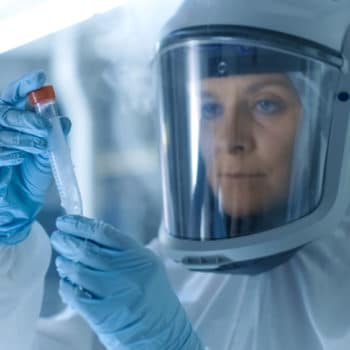Why We Love It
-
$32,770Potential Avg. Salary
-
24.9%Job Growth Rate
-
Growing DemandJob Outlook
-
Dependable Daily WorkloadCareer Attribute
Phlebotomists are the individuals who take blood from patients when needed for laboratory tests or blood donation. They work to comfort patients when they arrive, explain the process of drawing blood, collect the amount of blood needed, and properly label drawn blood for testing or donation purposes.
Recommended Schools
What is a Phlebotomist?
The following job responsibilities are common for individuals in phlebotomist roles:
- Use a needle and containers to take blood from individuals for testing purposes or for blood donation
- Comfort anxious patients by talking them through the process or suggesting relaxation techniques
- Monitor patients after blood is drawn to ensure they aren’t having an adverse reaction
- Label drawn blood for use in laboratory testing or donation
- Clean and sanitize tools to prevent the spread of disease, and dispose of needles appropriately
A Day in the Life
The job of a phlebotomist is primarily to draw blood from patients. The process of drawing blood is important for a couple of reasons. First, blood is commonly donated by individuals for use in blood transfusions for sick or injured patients in hospitals. Second, blood is used in a variety of laboratory tests to diagnose whether or not a patient is suffering from specific types of diseases or illnesses. Phlebotomists work to draw the blood needed from patients for both of these purposes.
Having blood drawn is not a pleasant experience for many individuals, so phlebotomists often need to calm patients before and after blood is drawn. They may work to explain the process to patients before blood is drawn and offer suggestions on relaxation techniques during the procedure. For example, they may recommend that nervous patients close their eyes during the process. They also monitor patients after blood is drawn to make sure they are not feeling weak or ill after blood has been removed.
Another important role of the phlebotomist is properly labeling blood after it has been removed. They must ensure that drawn blood is properly labeled with patient information in order to ensure laboratory test results are attributed to the correct patient. Additionally, they have responsibilities to properly clean and sanitize their instruments and dispose of needles used to help prevent the spread of infectious diseases that could be spread by contact with infected blood samples.
Typical Work Schedule
Working as a part-time phlebotomist can be a choice for college students or as a second job for additional financial support. However, most phlebotomists have to work full-time following the regular working schedule of 40 hours. Some phlebotomists who work in hospitals and labs may need to work on rotating shifts that include evenings, weekends, and holidays. You may also have to travel to different offices and sites in order to collect blood donations and set up mobile donation centers which may add longer hours. It should be noted that the job requires standing for long periods of time, and proper care when handling blood, needles, and other medical supplies and equipment to avoid injuries.
Projected Job Growth
According to the US Bureau of Labor Statistics, the employment of phlebotomists is expected to increase by 17% from 2019 to 2029. This is much faster than the average for other occupations. Different medical institutions like hospitals, diagnostic laboratories and blood donor centers require the services of phlebotomists to perform blood work. You should not face problems finding a job in this field. You will need certification from one of several reputable organizations, such as the National Center for Competency Testing (NCCT), National Health career Association (NHA), the American Society for Clinical Pathology (ASCP), the National Phlebotomy Association, and the American Medical Technologists (AMT).
Typical Employers
Blood analysis remains an essential function in medical laboratories and hospitals to help doctors with diagnosis which causes this high demand for this profession. Accordingly, hospitals and medical labs remain as the most common employer. You may also work for mobile blood centers or dedicated donation centers which become more critical during emergencies. Other employers include ambulatory healthcare services. You can also be employed by different physicians’ offices as a part of the medical team as well as being employed by different outpatient care centers. It is also possible to work for non-profit organizations as the American Red Cross.
Recommended Schools
How To Become a Phlebotomist
While certification is almost always required to work as a phlebotomist, some employers are willing to train aspiring phlebotomists on the job and pay for the required education in order for the phlebotomist to become certified. In these scenarios, phlebotomists may be able to find internships or entry-level positions with only a high school diploma. However, in order for an employer to be willing to train you, they typically want you to have some preexisting professional healthcare experience.
Conversely, you may be able to find work as a phlebotomist immediately by earning a certificate in phlebology from a community, trade, or vocational college. These programs usually require less than a year of study and train aspiring phlebologists how to properly draw blood, how to safely dispose of needles, and how to clean and sanitize equipment. With a certificate in phlebology from a local or online school, you should be able to find work in the field with no previous professional experience.
In some states, certification is mandated by state laws and regulations. If mandated by state, you’ll need to earn a certification by passing a written test offered by a certifying organization like the National Center for Competency Testing (NCCT), National Healthcareer Association (NHA), American Society for Clinical Pathology (ASCP), or the American Medical Technologists (AMT). By passing the test and completing the required education, you’ll be able to work as a certified phlebotomy technician.
Phlebotomist Salary Data
We’ve provided you the following to learn more about this career. The salary and growth data on this page comes from recently published Bureau of Labor Statistics data while the recommendations and editorial content are based on our research.
National Anual Salary
Low Range
$26,690Average
$32,770High Range
$45,190National Hourly Wage
Low Range
$13/hrAverage
$16/hrHigh Range
$22/hrHow do Phlebotomist salaries stack up to other jobs across the country? Based on the latest jobs data nationwide, Phlebotomist's can make an average annual salary of $32,770, or $16 per hour. This makes it an Above Average Salary. On the lower end, they can make $26,690 or $13 per hour, perhaps when just starting out or based on the state you live in.
Salary Rankings And Facts
#660 Nationally for All Careers
Highest Education Among Phlebotomists
- 0.7% Doctorate
- 1.1% Masters
- 8% Bachelors
- 16.1% Associates
- 45% College
- 26.2% High School
- 2.9% Less than High School
Job Growth Projections and Forecast
2014 Total Jobs
112,7002024 Est. Jobs
140,800Job Growth Rate
24.9%Est. New Jobs
28,100How does Phlebotomist job growth stack up to other jobs across the country? By 2024, there will be a change of 28,100 jobs for a total of 140,800 people employed in the career nationwide. This is a 24.9% change in growth over the next ten years, giving the career a growth rate nationwide of Below Average.
Growth Rankings And Facts
#28 Nationally for All Careers
What Companies Employ The Most Phlebotomists
| Industry | Current Jobs | New Jobs Needed | % Increase |
|---|---|---|---|
| General medical and surgical hospitals; private | 34,600 | 4,300 | 4% |
| Medical and diagnostic laboratories | 31,400 | 10,400 | 10% |
| All other ambulatory healthcare services | 20,100 | 8,000 | 8% |













